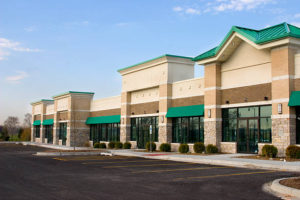The Pandemic Has Shopping Center REITs Doing Better Than Ever
October 21, 2021 | Kyle Hagerty

Investors looking for gains in commercial real estate have been left scratching their heads as the ongoing global pandemic turns the sector upside down. As traditional retail, offices, and apartments falter, the humble strip mall, an epicenter of community shopping, is proving its lasting value to neighbors and investors alike.
Changing shopping habits have shifted investment strategies in the real estate sector. As more goods are sold online, physical store footprints are changing. Understanding what is being sold online is the key to understanding the future of brick-and-mortar retail. Fashion, technology, and books are among the most common items bought online. It follows then that malls relying on department stores, clothing boutiques, and anchor tenants like Best Buy or Barnes & Noble have struggled. Strip malls’ tenants are uniquely positioned against e-commerce. Your typical strip mall around the corner features local dining, beauty needs, financial services, gyms, and medical facilities, none of which can be bought online.
Green Street’s monthly report on commercial property values shows community shopping centers rose 14 percent in the month of August and up 25 percent in the year. The value of strip malls is up 6 percent over pre-pandemic levels. There may not be any glitz or glamour to neighborhood shopping centers, but they form the backbone of many communities. The value of strip mall real estate is backed by its public good to the area its serves. Giving nearby residents access to dry cleaning, a quick coffee, a haircut, yoga classes, or an ice cream cone expands local investment in the community, driving tax revenue and job growth in your own neighborhood. Amazon isn’t going to sponsor a local little league team, but the local Italian joint might.











